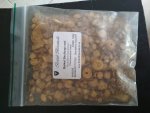Hey, another update:
Chinese skullcap is still remarkably effective. I spent most of last week exercising, and didn't get any PEM, despite doing both pretty intense cardio (walking quickly or cycling up very steep hills) and weights most days. I took some skullcap before my walk or ride for that day, and supplemented with 600 mg or so of alpha lipoic acid before the hills, and did the same for the weights session (the skullcap isn't really as portable, and I'm trying not to use too much). Then last weekend I went to a boxing class. This was definitely the hardest work out I have done since I got ME, and was obviously hard for the rest of the class too, even without ME. It was effectively a whole hour of what previously would have counted as over-exertion for me, but again, no PEM, just the expected stiffness from no those using particular muscles for a long time.
I would have only been able to do maybe half this much, and then only by being careful and pacing myself, if I had not added Chinese skullcap to the other things I listed above. It really has been a game changer for me: I can now exercise normally once again, which was the only thing tha was stopping me from getting on with my life before.
I mention all this not to make others jealous, but to encourage everyone to at least try Chinese skullcap; I have found that the gut side of things is very important too, as is sleep, but this has pretty much solved my energy problems.
Chinese skullcap is still remarkably effective. I spent most of last week exercising, and didn't get any PEM, despite doing both pretty intense cardio (walking quickly or cycling up very steep hills) and weights most days. I took some skullcap before my walk or ride for that day, and supplemented with 600 mg or so of alpha lipoic acid before the hills, and did the same for the weights session (the skullcap isn't really as portable, and I'm trying not to use too much). Then last weekend I went to a boxing class. This was definitely the hardest work out I have done since I got ME, and was obviously hard for the rest of the class too, even without ME. It was effectively a whole hour of what previously would have counted as over-exertion for me, but again, no PEM, just the expected stiffness from no those using particular muscles for a long time.
I would have only been able to do maybe half this much, and then only by being careful and pacing myself, if I had not added Chinese skullcap to the other things I listed above. It really has been a game changer for me: I can now exercise normally once again, which was the only thing tha was stopping me from getting on with my life before.
I mention all this not to make others jealous, but to encourage everyone to at least try Chinese skullcap; I have found that the gut side of things is very important too, as is sleep, but this has pretty much solved my energy problems.

